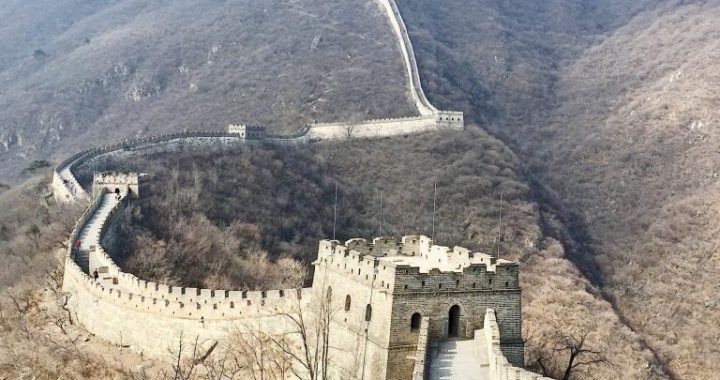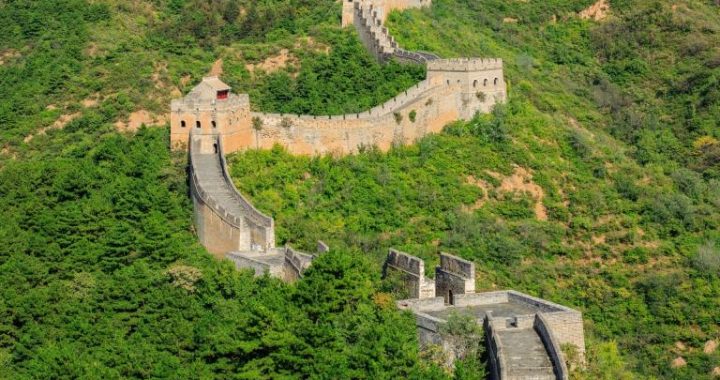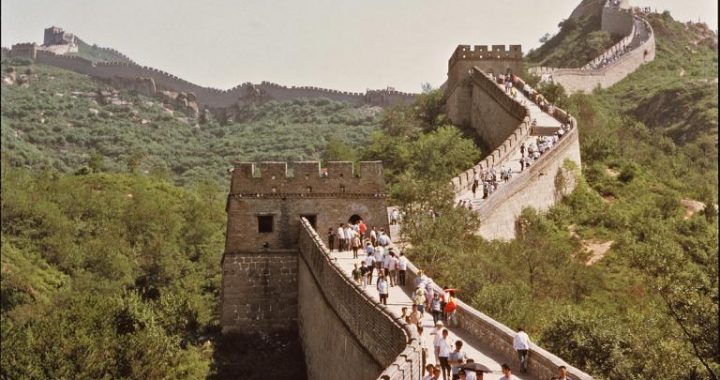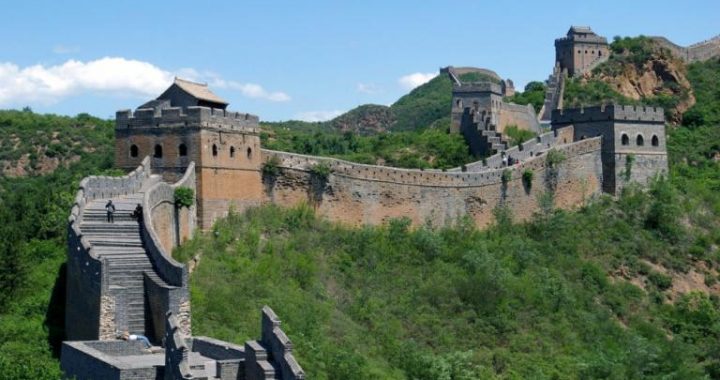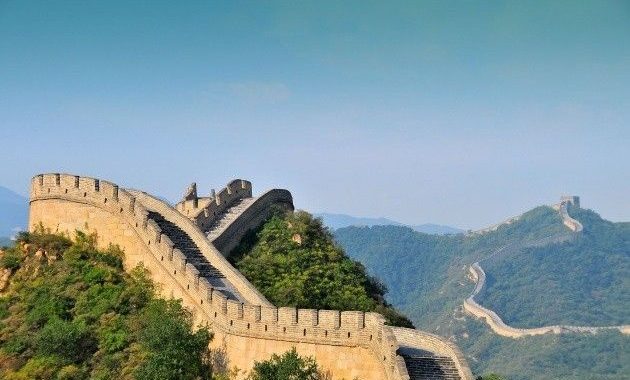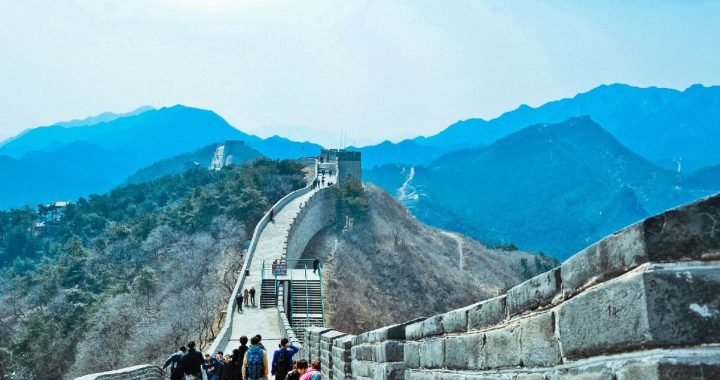GREAT WALL
4 min readThe Great Wall(wanli changcheng) snakes its way across northern China,from the Yellow Sea and past the Gobi Desert, for some 3, 700 miles (6,000 km). While it’s not visible from the moon as has been claimed,it’ s still remarkable piece of engineering and is the most famous symbol of China.
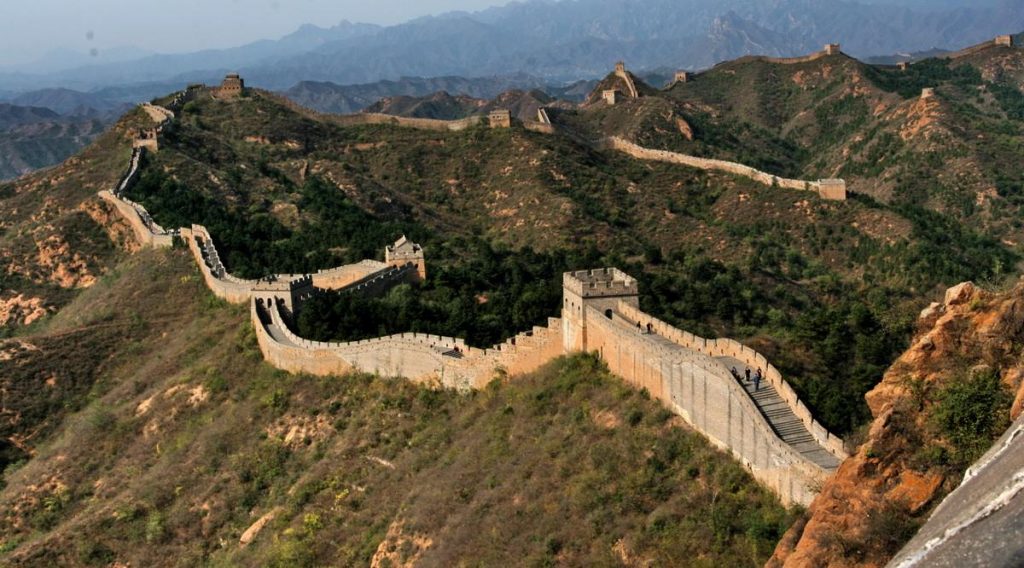
The Great Wall winds its way across China like giant dragon.(chongcheng The genesis of the Great Wall dates to the Warring States period from 475 to 221 BC, when Chinese feudal kingdoms built earthen ramparts to defend against nomadic invaders. It was under the fierce emperor Qin Shihuang who unified China in 221 BC that the Great Wall really began to take shape. He conscripted some 300,000 laborers to work for ten years on
joining the various pre-existing sections into a single fortified wall. The suffering of the workers who toiled in freezing winters and scorching summers became legendary. As the dynasty came into being and passed into history, the Great Wall was continuously repaired and extended.
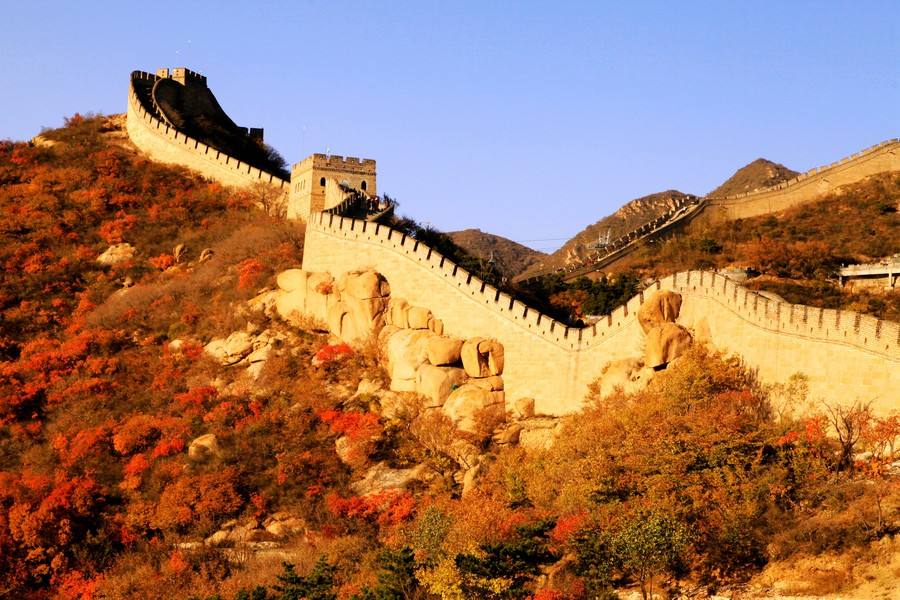
The sections of the Great Wall near Beijing were renovated during the Ming dynasty,whose leaders spent a century strengthening and extending the Wall to the Yellow Sea.The previous ramparts, which were made of stones, packed earth and wood, were covered by Ming builders with bricks. They built crenellations to protect archers, widened the Wall so it could accommodate five horses abreast, and added many watchtowers. A system of beacons lit from tower to tower ensured that enemy troop movements were swiftly relayed to headquarters.
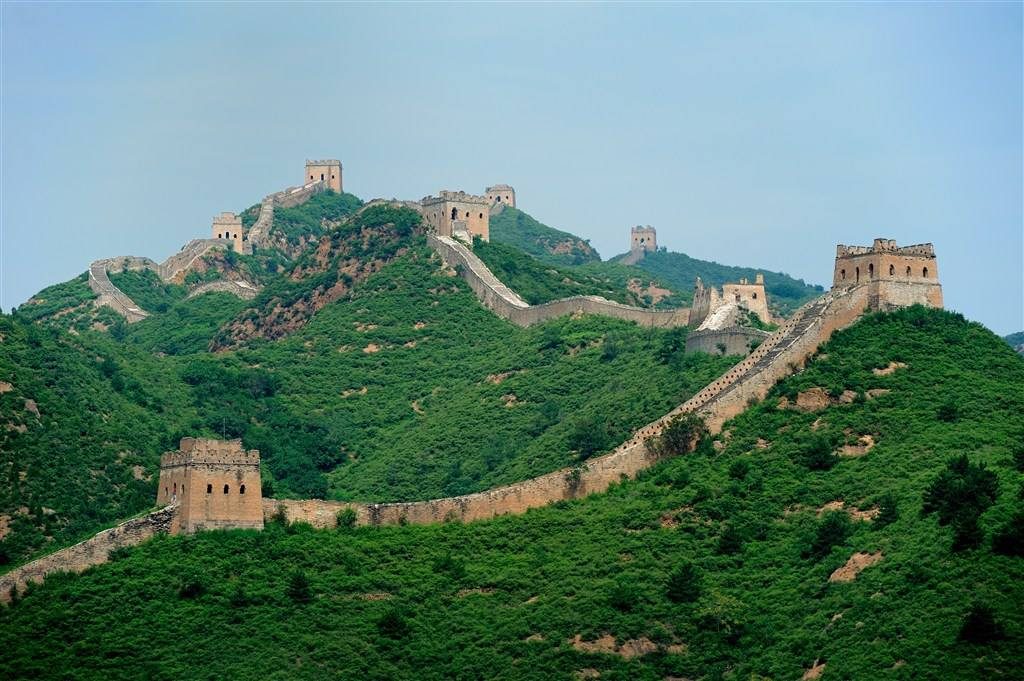
Despite such defensive features, the Great Wall failed in its purpose of keeping out invaders. It was breached several times, notably by the armies of Genghis Khan in 1215 and by Manchu troops in 1644. Conversely the Great Wall was a tremendous success in forging a sense of nationhood since it marked the physical boundary between China and abroad, and the psychological boundary between civilization and chaos. Scaling forbidding landscapes of mountains and deserts, the Great Wall was also a triumph of the emperor’s will over nature.

There are three major sections of the Great Wall open to tourists near Beijing:Badaling(Bada1ing《badd1ng),utanytnyandSimatasmdt)A11(simatai).All three are built on steep terrain so it’s a good idea to wear comfortable shoes and bring water. This advice holds especially true when going to the Simatai section or to the “Wild Wall” sections that haven’t been restored Many expats enjoy hiking along the “Wild Wall” but it’s not for the faint of heart: climbing conditions can be arduous and there are no signposts, so hikers will need a good map or a guide.
Whatever section you choose to visit, the simplest way to get there is to hire a car and driver for the day. Depending on the type of vehicle and the distance to be covered,expect to pay anywhere from RMB 500 to 1, 000 (plus an additional RMB 400 for an English-speaking guide). Another option is to join a guided tour, these cost around RMB 250 to 400 per person. Both private cars and tour bus reservations can be booked through hotels and travel agencies like
Badaling Section
badaling changcheng
Only 43 miles (70 km) away by superhighway, Badaling is the closest section of the Great Wall to Beijing and can be visited in half a day. Moreover, its proximity to the Ming Tombs means both sites can be seen in a single outing. Badaling was completely restored after 1957. It has a chairlift and fast food restaurants and can be very crowded with hawkers and tourists, but all that fades away once you leave the parking area and begin to walk along the Wall.
Yanqing County 6: 30am to 7pm peak-season 7am to 6pm off-season 45 peak-season; 40 off-season
Mutianyu Section
mutianyu changcheng
Mutianyu is located some 56 miles (90 km) north of Beijing, and like Badaling, is a recently renovated section that’s very popular. Mutianyu lies in rugged territory and reaching the Wall from the main gate involves a strenuous climb up a steep stairway, but fortunately there’s a chairlift. Once on top, the views of the Wall undulating down wooded canyons and up mountain ridges are breathtaking.
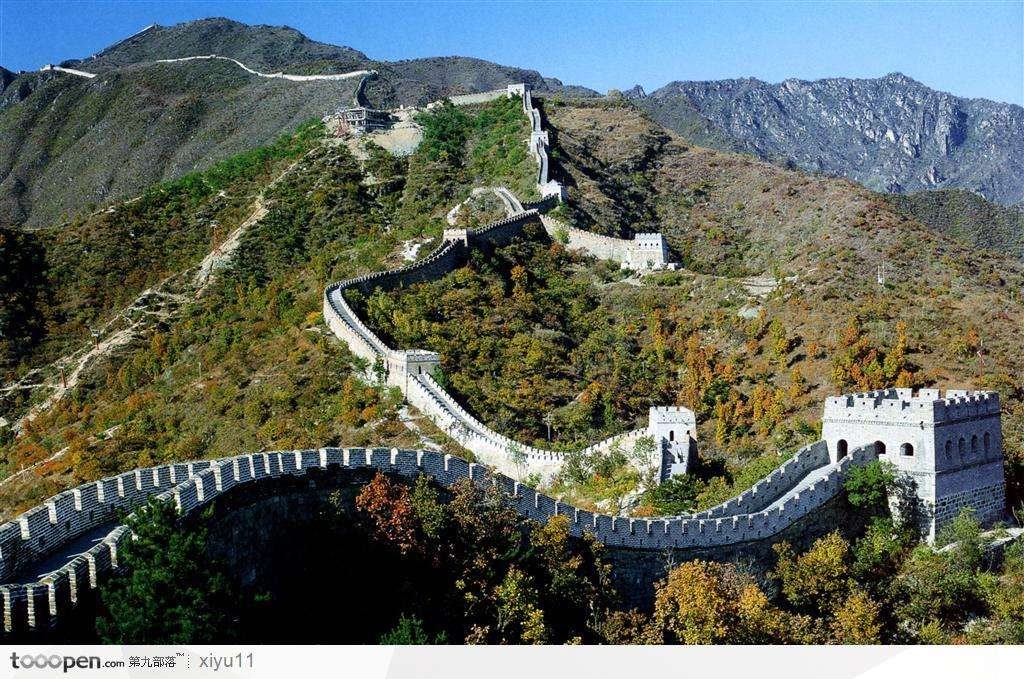
Huairou County
7am to 6pm 45
Simatai Section
simatai changcheng
The Simatai section is a dramatic testimony to Ming engineering skills with one section tic as steep as 85 degrees. Only partially restored, Simatai allows athletic visitors who climl past the first watchtowers to see the Wall in its wild, crumbling state. Less intrepid visitors can take gondola. Simatai is 68 miles (110 km) northwest of Beijing.
“I tell friends to go to the Lama Temple since it’s the only Tibetan Lamaist temple you can visit in Northern China and has an enormous collection of Buddhist art.’ at spicy cravfis the restauran “In the summer you should go eat spicy crayfish and drink beer in one of the restaurants on Ghost Street (Guijie en underrated storia sei that nteparti cularly enjiog is the Bel. tower (behind the Darum Towerrom sually there are contemplate the nearby hutongs, the bustling modern city in the distance, and the contrast between them.
